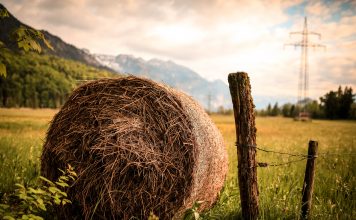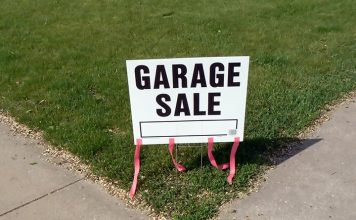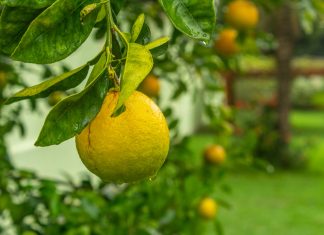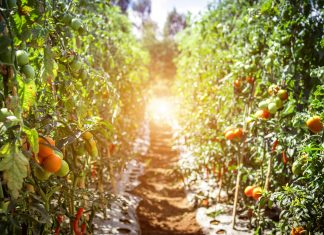 |
|
| Issue #116 • March/April, 2009 |
| When the world wearies and society ceases to satisfy, there is always the garden. Minnie Aumonier |
Yes, and if your budget is lean and you want something green, there’s always the garden. I’m more practical than poetic, but on second thought, we both have a point.
Why have a garden?
What could be better than a garden as an excuse to play in the dirt, think and meditate, get some sun and exercise, and give nature a chance to show its stuff. During this recession a garden in the yard is better than money in the bank, and is much more profitable. A handful of seeds can produce a pantry full of organic food for winter.
|
A garden is an amazing study of life itself. You can show the kids where food comes from by marveling with them over the miracle of poking tiny seeds into the dirt and seeing them come to life in a week or so right before their eyes. And if you aren’t too squeamish, you and the kids can study bugs and worms and insects while you are down at their level. It’s a perfect opportunity to explore the fascinating and sometimes startling micro-world you thought was only on the Discovery Channel! When you meet eyebrow to antennae with a Jerusalem Cricket (potato bug) you’ll know what I mean!
To garden is to believe in tomorrow. It’s a fun challenge to play the optimistic chemist who mixes soil, compost, water, and seeds together under the sun in hopes the experiment will spring to life and flourish. If you do it right you’ll end up with not only tasty nutrient-rich food to eat but also thousands of seeds for next year’s crop. Nature is incredibly bountiful: “Tickle the earth with a hoe and it will laugh a harvest.”Mary Cantell. Well, it’s not quite that easy. Let’s get to work.
Garden location
First of all, you don’t need acreage to grow most vegetables and fruits. You can have a customized garden almost anywhere that you can fill containers with soil and have enough sunlight drenching your plants for at least six hours a dayeven on an apartment deck. Many edibles can be grown beautifully in wine barrels cut in half, deep cedar planter boxes, window boxes, hanging baskets, terra cotta clay pots, plastic pots, or any other well-drained containereven an old bathtub or wheelbarrow. You can put casters on wooden containers and roll them around to follow the sun, and/or make a simple wooden box with long legs like stilts so you can harvest herbs at waist level.
If your growing space is extremely limited, you can put up trellises along a fence or wall or garage and grow vines and sprawling plants verticallysuch as cucumbers, squash, and pole beans.
|
I built an 8×8-foot free-standing 2×4 frame and covered it with lattice to hide the unattractive pump house for my well. I planted climbing roses along the bottom and within a few years they grew into a solid wall of gorgeous pink blossoms. The same could be done with fruit or vegetable-bearing vines.
If you have a yard, front or back, and all you have growing is grass, it’s time to get practical and creative and use some of that taxed property to grow food instead. In some cases a lawn is a luxurious waste of space and water, and it yields little in return for all the time and energy you spend mowing, fertilizing, aerating, watering, raking, and picking up dog poop. Why not raise something besides a crop of unwanted dandelions? Raise your neighbor’s eyebrows insteadbe the first in your neighborhood with a front yard garden!
Sure, it might be unconventional in a subdivision in town, but when it comes down to saving big bucks on fruit and vegetables, who cares? It is possible to design a very attractive front yard garden that meanders around the yard with grass trails in between raised beds, and pots of flowers and herbs here and there as colorful accents. Draw it out on graph paper and you’ll see how beautiful, functional, and educational “edible landscaping” can be. You could make history combining botany and biology with geometry. Remember crop circles?
Why use raised beds?
If you have a backyard with southern exposure you can build a 2 or 3-tiered set of raised beds along the fence or against your house’s concrete foundation, and grow the same amount of vegetables as on flat ground but concentrated in a long narrow strip. Not only that, but the deep soil, and the heat and water retention that happens with one tier against the other makes for unusually advantageous growing conditions.
Tiered raised garden beds are easy to access for weeding and tending so they are kind to backs and knees. A fifty-foot run of three tiers adds up to 150 square feet of garden space. That’s a lot of tomatoes, snow peas, carrots, bell peppers, onions, beets, radishes, parsley, chives, and lettuceall in a 3-foot wide swath of your yard!
|
You can use rocks, stones, concrete blocks, bricks, railroad ties, synthetic lumber, or weather-resistant lumber for these terraced beds or any other raised beds. If you use standard lumber, the back section will be about 30 inches or 36 inches high, depending on whether you use three 1x10s or 2x10s or three 1x12s or 2x12s stacked on edge for the back section. The middle section will use 2 boards stacked on edge, and the front section will use one. Use tie bolts (½-inch threaded stock with nuts and washers on each end) to hold them together so they don’t bulge with the weight of wet soil when filled to the brim. (See illustration.)
Note: I’ve hammered ½-inch rebar into the ground to hold 2-foot tiered walls using three 1x8s of old cedar-fence wood on edge and it worked great.
You’ll have to haul in a load of topsoil and some soil amendments but that will be a one-time expense. (It costs about $25/cubic yard here in southern Oregon.) You may already have some or all of your own soil to use, but be sure it’s rich enough. Nutrient-rich organic soil is the single most important ingredient to having a successful productive garden.
Raised beds offer many advantages to limited-space gardening, and can produce an abundant harvest for the average family. Beds can be anywhere from 2 to 5 feet wide (4 feet is ideal) with working space around them (footpaths), but a tomato bed can be as narrow as 1½ feet. Several beds of varying lengths can be placed almost anywhere there’s maximum light and sun exposure all day, preferably oriented north and south.
|
Raised beds can extend your gardening season because they warm up sooner in the spring and keep producing into the fall.
The beauty of raised beds and other self-contained gardening techniques is that you can’t accidentally step near your plant roots and compact the soil, as can happen when weeding a conventional garden plot. Roots need to breathe in order to absorb water and nutrients.
Because the beds are raised, you won’t have to prepare the ground soil, except for laying down some kind of gopher and mole control like hardware cloth, small-holed chicken wire, or other metal mesh. The mesh should continue at least 3 inches up the sides and be stapled to the inside of the perimeter boards. If your bed will be resting on hard clay ground or worse, you may need to put down a few inches of gravel first to insure good drainage. In the case of impenetrable ground, the gopher mesh probably won’t be necessary. (Famous last words.)
Then you simply fill the forms with topsoil and you’re good to go. An optimum garden soil is made up of two parts fertile topsoil, one part fine compost, and one part sand, all mixed well and allowed to settle in the forms after being saturated with water. Every year thereafter you can continue to enrich the soil by adding compost and manure and other conditioners like wood ash, blood meal, and bonemeal.
|
Special projects for kids
Corn is a fun crop for kids to plant and tend, because it grows fast and tall and they can hide in it for fun and make scarecrows out of the stalks in the fall. It should be planted in squares or blocks for water retention and good pollination, not in long skinny rows. It will tower over the other veggies and deplete the soil, so it should be planted in its own bed where it can’t shade the garden and drink up all the water. Early hybrid varieties are smaller and mature faster in shorter growing seasons. Stagger your plantings two weeks apart from warm spring until midsummer so the corn doesn’t ripen all at once. Keep in mind that corn is greedy; it loves lots of heat and water and a nice breeze to pollinate its tassles. Run rows north and south for maximum sun. Figure one to two good ears per stalk.
|
Strawberries are easy to grow and they adapt to almost any kind of container. They send out runners and propagate themselves continuously, but they also welcome a helping hand to divide them up and transplant them anywhere and everywhere. “Strawberry Fields Forever” aren’t just the lyrics in a Beatles songthey’re reality when you let strawberries have their way. What could be better than a surplus of strawberries? It’s a thrill for even very young children to pick the bright red berries out of the patch with their tiny hands and eat ’em on the spot.
But this article is not about what you should plant and how to grow it, but to encourage you to build raised beds, and to use planters and containers to grow your garden in. Raised beds facilitate what is called “intensive gardening”meaning increased yields, improved quality, and efficiency. You’ll have more control over every aspect of the garden work: planting, watering, fertilizing, weeding, thinning, pruning, removing pests, and harvesting, not to mention smelling and tasting. And as aforementioned, the extra elevation makes the garden a pleasure to tend without crouching and straining. If you ever do have to resort to your knees though, strap on cheap foam knee pads from the hardware store or the grange ($5). They work great and are totally comfortable. I even wear them in the house when I’m scrubbing the bathtub or cleaning the oven.
Building the beds
Beds made from conventional lumber are easy to build and only require the most rudimentary carpenter skills. You can use just about any old and gray lumber you can find or you can buy garden heart redwood planks or cedar fencing from the lumber yard. My raised beds are made from regular Douglas Fir (DF) 2x10s in standard lengths because I had a bunch of culls lying around unemployed, and the soil is rich under the beds, so taller sides weren’t necessary. The fir won’t last as long as redwood or cedar but I can switch when it starts to rot. Right now beautiful DF lumber is cheap cheap cheap at the lumber yards (only 20 cents a foot in December 2008).
|
The end boards of your rectangle or square are joined to the side boards with 3-inch sheetrock screws. It’s a good idea to put a couple of 90 degree brackets inside each corner, but I used extra screws instead. Note: Always pre-drill screw holes close to the ends of the boards to prevent splitting.
For more strength you can place a vertical 4×4 or 2×4 inside each corner to fasten the horizontal boards to. If you want to anchor your bed to the ground, build it upside down, taper the ends of the four corner posts, then turn it over and drive those legs into the ground. Use a small sledge but put a protective board on top of the corner to pound on. (See illustration.)
Raised wooden beds can have 1×2 inch vertical stakes easily screwed to their sides to hold translucent plastic sheeting for heat retention in early spring, when starting seeds or tiny plants (cold-frames). Later on, those same stakes can support bird mesh to protect young plants until they mature. The garden perimeter can be strung with plastic tape around it (against the stakes) to discourage dogs from jumping in and digging.
Another method to support bird mesh or translucent plastic sheeting is to place a row of arched ½-inch PVC pipe over the top of the bedgreenhouse-style if you like. Just fasten the ends of each bendable pipe to the insides of the beds with little U-brackets. Brackets are cheap and so is PVC pipe. Clip the bird mesh on with clothespins.
|
Railroad ties, logs, timbers, or beams can be laid up corn crib style to make very attractive raised beds. But do not use pressure-treated wood; the poisonous chemicals that preserve the wood will leach into the soil. I would recommend lining the bed with 6 mil plastic or some kind of waterproof barrier where soil comes in contact with creosoted railroad ties.
Raised concrete block beds are impervious to decay and are easy to set up. Just haul in a predetermined number of recycled or new 8x8x16- inch blocks (cost is about $1.30 each here in Oregon) and stack them 1, 2, or 3 high, fill the rectangular beds with soil, including the voids in the blocks, and start planting. Son Eric and his then-girlfriend Emily set up a laser beam “deer-activated” sprinkler in their concrete block garden to scare away unwanted grazers.
My favorite containers for individual mini-gardens are tires. I plan on setting out 24 tires (four six-tire rows running north and south) as one of next summer’s gardens. Old tires are free from places that sell and install new tires (Les Schwab in Oregon) and they couldn’t be easier to fill and plant. They hold heat and water and keep weeds at bay. They can be partially buried to conceal the tire if you don’t like the look. Imagine how happy each tomato plant will be having a room of its own to stretch its roots. They go crazy in tires, and so does everything else. It’s a great way to recycle.
Mulch and composting
I mulch everything with straw to conserve water from evaporation and to trap heat. It keeps mud from splashing when you water and discourages weeds from starting. It costs about $5 a bale and one or two bales will mulch several beds.
I recommend reading “The One-Straw Revolution” by Masanobu Fukuoka about the importance of mulching to conserve water and to create a microbiotic environment for optimum yields. His popular book, a best seller in 1978, is about a fascinating and enlightening method of natural gardening that makes perfect sense (common sense) and requires no weeding! His basic message is how important it is to protect the soil from direct sunlight because it kills on contact the good and necessary micro-organisms that are exposed on the surface.
|
It’s a good idea to start your own compost pile in a corner of the yard where it’s partially hidden but close enough to the kitchen door to make it handy to throw organic scraps into it on a daily basis. Compost can be made on open ground by heaping up layers of organic matter such as grass clippings and leaves and kitchen scraps, but a simple slatted bin or lattice bin is more sanitary. It is self-contained, easy to erect, and easy to partially disassemble when you want to turn (aerate) the compost from time to time, and it’s ideal for protection and ventilation. The bin can be as small as 3×3 feet and be adequate to supplement the soil in a few raised beds or a small garden.
Small space fruit trees
It’s possible to even grow fruit trees where there seems to be no room available by growing them against a wall or fence or house and pruning off any branches that dare to grow in any direction but laterally. A trellis or lattice against a concrete wall will provide wood slats for tying off and training young branches. The pruned trees or vines are called “espaliers,” and they are a beautiful and unusual growing technique creatively used in tight spaces by professional landscapers. Edible espaliers that are easily trained to grow in one plane include almond, apple, apricot, cherry, peach, pear, plum, nectarine, and citrus. To use a noun as a verb, I say “Espalier away!” (See “Espalier your trees” by J.D. Hooker, available in The Fourteenth Year anthology or at www.backwoodshome.com.)
|
Closing thoughts
I love the concept of a community garden where a group of friends (one country mouse with property and several city mice with ambition and energy) get together and share a garden space, share the expense, share the work, and share the harvest. It’s a great way to get together socially, involve the kids, talk, laugh, gossip, share ideas, and get some exercise. And saving money on organic food by growing it yourself is just plain smart.
Learn more about Dorothy and/or contact her at her website www.dorothyainsworth.com
























